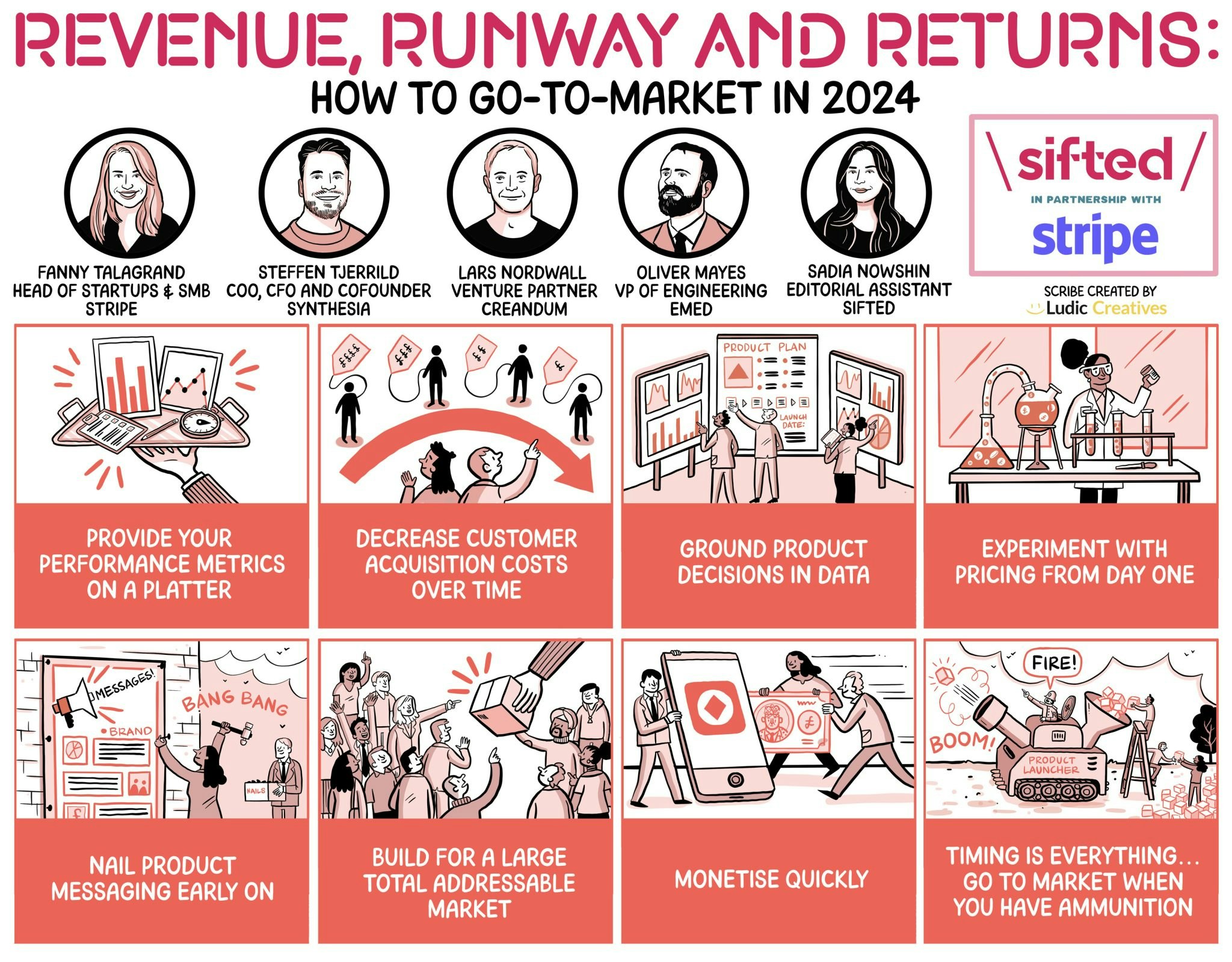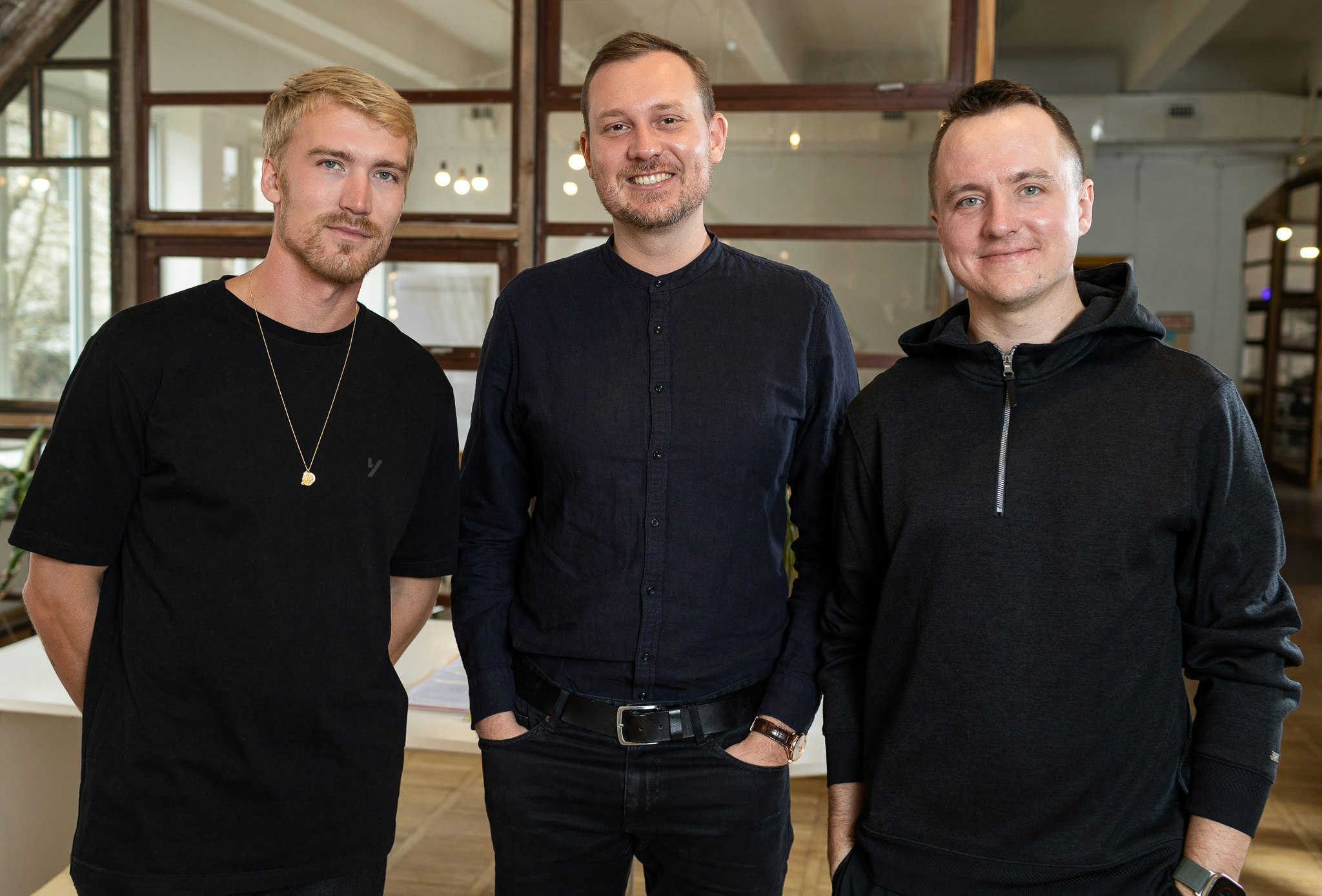Last year, staying alive was many startups’ focus. As VC chequebooks closed up, operators and founders sought a path to profitability.
2024 has started off with a hangover: “There’s a focus on budgets, less flexibility on spending and more pressure from investors and board members to deliver,” says Lars Nordwall, venture partner at generalist VC fund Creandum.
Given these constraints, what are the makings of a watertight go-to-market strategy?
In our latest Sifted Talks, we asked startup operators and investors to share their take. Our panel featured:
- Steffen Tjerrild, COO, CFO and cofounder at AI startup Synthesia — one of a small herd of European companies to hit the $1bn unicorn valuation last year
- Lars Nordwall, venture partner at generalist VC fund Creandum — he was previously president and COO at graph database unicorn Neo4j, where he scaled revenue to 150m ARR
- Oliver Mayes, VP engineering at healthtech eMed — the company that acquired Babylon health
- Fanny Talagrand, head of startups and SMB at financial infrastructure platform Stripe
Here’s what we learned:

1/ Provide your performance metrics on a platter
Fundraising is hard to come by — so founders need to provide their performance metrics on a platter for investors.
Startups should think hard about their goals and work with investors to crystallise KPIs. “Whether it's building the customer base, seeing profit or cutting the cost of acquisition: you need everyone to agree,” says Mayes.
Rather than focusing on one single metric, build a dashboard of crisp data.
Reporting seems like a big company problem, but the earlier you get it nailed down, the better — Fanny Talagrand, head of startups and SMB, Stripe
2/ Decrease customer acquisition costs over time
Three years ago, “profitability” rarely popped up in startup pitch decks: “traction” and “growth” took priority. Now, it’s firmly the focus for startups.
Startups shouldn’t shy away from spending on customer acquisition, but they need to demonstrate that the cost of acquiring customers (CAC) will decrease over time.
“You can burn a lot of money, as long as you can show that quarter by quarter, you're moving towards profitability,” says Nordwall.
With a tighter budget in place, you build a very efficient rocketship — Lars Nordwall, venture partner, Creandum
3/ Ground product decisions in data
When developing new product features, gut feel can be great for building out a hypothesis. However, decisions should be backed up by data.
“As you think about the products you want to develop, spend time with users: ask them what hurts and what’s complicated,” says Talagrand.
Carrying out user research will allow you to focus on what users will pay for, rather than splashing cash on “nice to have” add-ons.
You have to throw out your preconceptions and really trust the data. The earlier you can build that into your processes, the better — Oliver Mayes, VP engineering, eMed
4/ Experiment with pricing from day one
Startups should think about pricing from day one. Go too low and you could be stuck maintaining “good deals” with early users for years to come… Go too high and it’s an uphill battle.
Reflecting on Synthesia’s year-over-year growth rate of 456%, Tjerrild says “giving more away for free to entice people about our offering was critical”.
40% of founders and startup operators are changing their pricing model this year, according to Stripe research.
Don’t spend years developing a product, then slap on a price at the last minute — Steffen Tjerrild, COO, CFO and cofounder, Synthesia
5/ Nail product messaging early on
When going to market, a simple and sticky message will get you off to a flying start. Messaging will evolve as your product matures, but startups should set the right tone early on.
“The right product marketer is probably one of the most critical roles… otherwise you overspend on sales and field marketing to make up for your weak message,” says Nordwall.
A lot of startups end up with a product initially, and then they try to look for the market, or segment. It should be the other way around — Nordwall, Creandum




